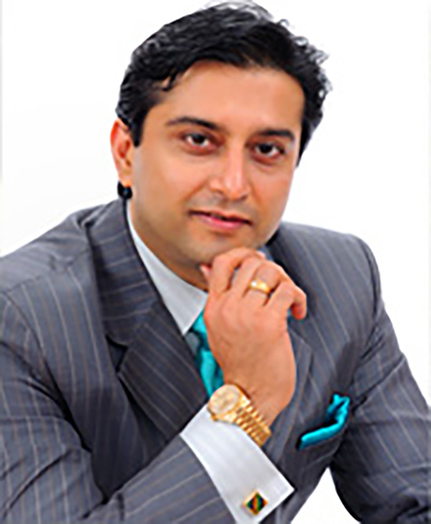
BREAST CANCER

Breast cancer is the most common cancer affecting women worldwide. It is due to uncontrolled growth of cells in the breast tissue, leading to the formation of tumors. While breast cancer is associated with women, it can also occur in men, though much less frequently. 42,000 women and 500 men die from breast cancer every year in United States. However, with advanced technology and treatment protocols, vast majority of them can be cured, if they are diagnosed in early stage and treated appropriately.
While the exact cause of breast cancer is not known, several risk factors can increase a person’s chances of developing the disease. These include:
- Age: Risk increases with age, especially after age 50.
- Family history and genetics: Having a close relative with breast or ovarian cancer or inheriting certain gene mutations (like BRCA1 and BRCA2), raises risk.
- Personal history: Those who have had breast problems previously are at a higher chance. Prior uterine and ovarian problems are added risks.
- Hormonal factors: Early menstruation (before age 12), late menopause (after age 55), and hormone replacement therapy can enhance risk.
- Lifestyle factors: Obesity, lack of physical activity, high alcohol consumption, smoking, and poor diet contribute to higher threat.
- Radiation exposure: Previous radiation treatments to the chest area, especially during childhood, heighten consequence.
- African Americans have a worse prognosis due to socio economic and genetic problems.
Common signs and symptoms include:
- A lump or thickening in the breast or underarm area;
- Change in the size, shape, or appearance of the breast;
- Dimpling, puckering or redness of the breast skin;
- Nipple discharge (other than breast milk), especially if bloody;
- Nipple inversion, ulceration or pain in the nipple area;
- Swelling of all or part of the breast;
- Pain in the breast that does not go away. However, most cancers are painless to start with.
Diagnosing breast cancer involves several steps:
- Physical examination: A clinical breast exam to check for lumps or changes.
- Imaging tests: Mammograms are the most common screening tool. Ultrasounds and MRIs may also be used to get a clearer image of suspicious areas.
- Biopsy: Removal of a small amount of breast tissue for laboratory analysis. This is the definitive way to diagnose cancer. Very often, this biopsy can be done with use of a needle directed to the area of abnormality with the aid of ultrasound, mammogram or MRI.
- Laboratory tests: Tests on the biopsy tissue help determine the type and stage of cancer, and whether it is hormone receptor-positive or negative.
Once breast cancer is diagnosed, it is staged to determine the extent of disease spread. Staging is critical for planning treatment. Grading refers to how bad the cancer cells look. A lower grade means the cells look more normal and may grow slower; higher grades are more aggressive.
Treatment plans are individualized based on the cancer’s type, stage, grade, and the patient’s overall health and preferences. Major treatment approaches include:
Surgery
Often the first line of treatment, surgery aims to remove the cancerous tissue. Types of surgery include:
- Lumpectomy: Removal of the tumor and a small margin of surrounding tissue, preserving most of the breast.
- Mastectomy: Removal of the entire breast, sometimes including nearby lymph nodes.
- Removal of one or more lymph nodes by selective fashion to know if it has spread to the lymph nodes.
Radiation therapy
High-energy X-rays or other forms of radiation are used to destroy cancer cells remaining after surgery or to reduce tumor size before surgery.
Chemotherapy
Medications that kill cancer cells or stop their growth, which can be given by mouth, injection, or intravenously. Chemotherapy is often used before surgery (to shrink tumors) or after (to destroy remaining cancer cells).
Hormone therapy
Some breast cancers are hormone receptor-positive, meaning their growth is fuelled by estrogen or progesterone. Drugs that block these hormones or lower their levels can be effective in treating such cancers.
Targeted therapy
These therapies specifically target abnormalities in cancer cells. For example, HER2-positive cancers may be treated with drugs like trastuzumab that directly attack HER2 protein.
Immunotherapy
This treatment helps the immune system recognize and attack cancer cells and is being studied intensively for various breast cancer subtypes.
There are specialised physicians in each of the above fields treating breast cancer, often working as a team. Each patient’s treatment is personalised.
While not all breast cancers are preventable, certain strategies can reduce risk:
- Maintaining a healthy weight;
- Regular physical activity;
- Limiting alcohol intake;
- Not smoking;
- Eating a balanced diet;
- Breastfeeding, if possible, has shown a protective effect;
- Limiting dose and duration of hormone replacement therapy;
- Routine physical examination by physician;
- Routine screening mammogram for detection of all abnormalities early on.
Early detection is key. Regular self-exams, clinical breast exams and screening mammograms especially after age 40 can help catch cancer at earlier, more treatable stages. If the breast cancer is diagnosed early and treated properly, over 95% of them can be cured with minimal disfigurement. There has been remarkable progress in this area during the last 30 years.
Breast cancer diagnosis can be life-altering. Rehabilitation, post-surgical cosmetic procedures, prosthetic appliances, management of side effects of medications and surgery, close follow-up to identify metastasis or recurrence are some of the items that can take time and effort. It is an emotional trauma for many people and their families. Patients often require emotional and psychological support. Support groups, counselling and open communication with loved ones play vital roles in helping the patients cope.
Dr. Venkit S. Iyer, MD, FACS, is a retired General and Vascular Surgeon. He has authored four books – “Decision making in clinical surgery,” “Aging well and reaching beyond,” “The Clinic” and “Geriatrics Handbook.” They are available through Amazon or from the author. His website venkitiyer.com has necessary links and contact information.
GUEST COLUMN
Medicare vs. Medicare Advantage: What You Need to Know Before Enrollment

Every fall, millions of Americans have the chance to review and adjust their healthcare coverage. The Medicare Annual Enrollment Period runs from Oct. 15 through Dec. 7, making it the ideal time to ensure your plan still works for your needs.
Original Medicare is made up of Part A (hospital coverage) and Part B (medical coverage). It gives you the freedom to see any doctor or hospital that accepts Medicare nationwide, but it doesn’t cover everything. Most people add a Part D prescription drug plan, and many also purchase supplemental coverage (Medigap) to help with costs like deductibles and coinsurance.
Medicare Advantage (Part C), on the other hand, bundles your Part A and Part B coverage —and often prescription drugs — into a single plan offered by private insurance companies. Many Medicare Advantage plans also include extras like dental, vision, hearing and wellness benefits. However, they usually work within provider networks, which may limit your choice of doctors and hospitals compared to Original Medicare.
So which option is better? It depends on your health needs, budget, and preferences. Original Medicare may suit those who travel often or want the widest provider access. Medicare Advantage plans may be attractive for people looking for lower upfront costs and added benefits.
The key is that your healthcare needs can change from year to year — and so can the plans. Premiums, drug formularies, provider networks, and coverage details may shift annually. That’s why the annual enrollment period is so important. Taking time to review your current plan and compare it to other options ensures you aren’t paying more than necessary or missing out on benefits that matter to you.
Whether you choose Original Medicare with supplemental coverage or a Medicare Advantage plan, always check your plan each fall to make sure it still meets your medical and financial needs. A little review now can help you avoid unexpected costs and ensure peace of mind in the year ahead.
Hermun Puri, a licensed insurance broker with Exact Medicare, can be reached at (813) 494-7724 or (813) 219-8424.
EYE CARE
AUGUST WAS NATIONAL EYE EXAM MONTH

By Dr. ARUN GULANI
August brings the close of summer, the excitement of a new school year, and a gentle but important reminder — it's or rather was National Eye Exam Month. As someone who has spent a lifetime caring for vision, I find this a perfect moment to talk about how often we overlook the very sense that connects us so deeply to our world.
Our eyes are extraordinary. They work constantly, often without complaint — from the second we wake up to the moment we drift off at night, helping us navigate our routines, connect with people, and experience the beauty around us. Yet, we rarely think about them until something goes wrong.
An eye exam is not just about updating your glasses. It’s a way to catch silent threats that can quietly take vision away. Conditions like glaucoma, macular degeneration, diabetic eye disease and cataracts can develop without pain or symptoms. And by the time we notice, it’s often too late to fully reverse the damage. That’s why regular, comprehensive eye exams are so important, because early detection is the best form of protection.
Depending on your age, lifestyle and risk factors, here’s what I usually recommend:
- Children: At least one exam before starting school, then regularly ensure visual development.
- Adults (ages 18-40): Every 2 to 3 years, unless issues arise.
- Adults over 40: Every 1 to 2 years, as age increases the risk of eye disease.
- High-risk individuals (like diabetics or those with a family history of eye disease): Every year without exception.
Beyond checkups, we can support eye health with simple, everyday choices. A few small habits make a big difference:
- Wear sunglasses that block 100% of UVA and UVB rays to protect against sun damage.
- Eat a balanced diet rich in leafy greens, carrots, citrus fruits, nuts and omega-3s — your eyes thrive on nutrients.
- Follow the 20-20-20 rule when using screens: every 20 minutes, look 20 feet away for 20 seconds.
- Stay hydrated — dry eyes are often a sign of low water intake.
- Avoid smoking, which significantly increases the risk of macular degeneration and cataracts.
August is also a time when children are heading back to school, and it’s worth noting how essential clear vision is to learn. Some problems, like a lazy eye or trouble with focusing, may go unnoticed by parents or teachers but can quietly interfere with a child’s ability to read, write, and concentrate. A quick, painless exam can help prevent frustration in the classroom and support your child’s confidence and performance.
We should also be mindful of eye safety at home, work and during sports. Eye injuries often happen in seconds — and many are preventable. Whether you’re using power tools, working in the yard, or playing high-speed sports like baseball or racquetball, protective eyewear is essential. It’s a simple precaution that could prevent permanent damage.
And if something feels off — if there’s sudden vision loss, flashes of light, a wave of new floaters, pain or a foreign object in the eye — don’t wait. Seek medical attention immediately. Time matters in emergencies, and quick action can often mean saving your sight.
Arun C. Gulani, M.D., M.S., is director and chief surgeon of Gulani Vision Institute in Jacksonville. He can be reached at [email protected] or visit www.gulanivision.com